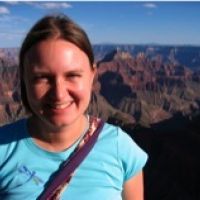Huckle et. al., 2012
Using Uranium-series Isotopes to Trace Water Sources to Streamflow and Estimate Soil Formation Rates in a Semiarid Montane Catchment
Huckle D. M., Ma L., McIntosh J. C., Rasmussen C., Chorover J. (2012)
Abstract V23E-2877 presented at 2012 Fall Meeting, AGU, San Francisco, Calif., 3-7 Dec (Poster)
-
Catalina-Jemez, GRAD STUDENT
-
Catalina-Jemez, INVESTIGATOR
-
Catalina-Jemez, INVESTIGATOR
-
Catalina-Jemez, INVESTIGATOR
Abstract
Chemical weathering is an important earth surface process that transfers nutrients from earth materials to the biosphere and provides a drawdown of CO2 over geologic timescales. Understanding controls on chemical weathering and soil formation rates is important to understanding long term landscape evolution and sustainability of the Critical Zone, the dynamic region of earth’s surface where bedrock, water, soil, and life chemically and physically interact. The La Jara catchment (LJC), part of the Jemez–Santa Catalina Critical Zone Observatory, drains a portion of the southeast side of the resurgent volcanic dome Redondo Peak in New Mexico’s Valles Caldera National Preserve and is well suited to study how aspect and lithology control chemical weathering rates. We will focus on two hillslopes in a zero-order basin within LJC: One east-facing hillslope of predominantly tuff lithology and one west-facing hillslope of rhyolite lithology. Several variables play a role in chemical weathering rates in this system, including water availability, lithology, temperature, vegetation, and atmospheric dust deposition. This study will use uranium-series isotopes, as well as major elemental chemistry, soil mineralogy, and particle size distributions to calculate soil formation rates and identify dominant controls on chemical and physical weathering processes. We hypothesize the east-facing hillslope will receive less solar radiation, leading to cooler temperatures and less sublimation of the snowpack, which will result in a larger volume of water input to soils and thus greater soil formation rates compared to the west-facing hillslope. This study will also use uranium-series isotopes to study modern hydrologic partitioning and trace source water contributions to streamflow during wet and dry seasons along La Jara stream. We hypothesize that the longitudinal evolution of streamwater chemistry and uranium-series isotopes will show increasing influence from deeper flowpaths with distance downstream.
Citation
Huckle D. M., Ma L., McIntosh J. C., Rasmussen C., Chorover J. (2012): Using Uranium-series Isotopes to Trace Water Sources to Streamflow and Estimate Soil Formation Rates in a Semiarid Montane Catchment. Abstract V23E-2877 presented at 2012 Fall Meeting, AGU, San Francisco, Calif., 3-7 Dec (Poster).
Explore Further




